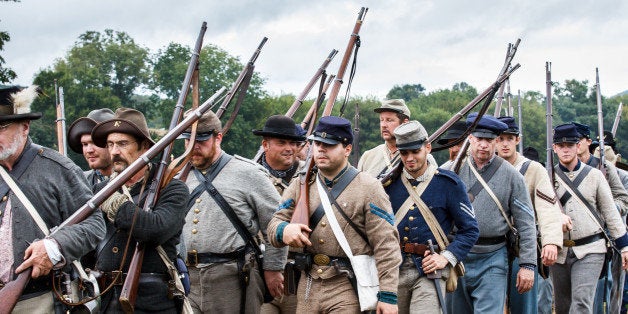
We usually think of the Civil War as the bloodiest conflict in U.S. history based on the number of men who went off to fight and never returned home. The definitive book on how this veritable avalanche of death changed American social culture was written by the historian Drew Gilpin Faust, who otherwise spends her days running a little university in Cambridge, Mass. Her book describes how in just four years, more than 600,000 men perished at a time when the country's total population (including slaves) was slightly above 31 million.
To put this into perspective, total mortality in World War II was 405,000 out of a national population count of 132 million. In other words, in the conflict with the second-highest number of casualties, the mortality rate was .003 percent. The Civil War mortality percentage was .019, almost ten times the casualty rate of World War II. And in fact, the Civil War numbers may be understated, according to recent scholarly publications, by as much as 25%. Wow!
Given my interest in the medical response to gun violence, I decided to look at the Civil War data in a little more depth. First, and this is a well-known fact, two-thirds of all Civil War mortality, perhaps even higher on the rebel side, were not from battlefield injuries, but from contagious diseases which spread like veritable wildfire among stationery troops. The biggest killer was typhus, which continued to decimate armies up through World War I. Next in line was 'acute diarrhea,' followed by dysentery, pneumonia and various types of 'fevers,' that were classified as 'miasmatic' disease.
All of the above information and much more can be found in a remarkable document, The Medical and Surgical History of the War of the Rebellion, a 6,000-page collection that was prepared and published by the United States Surgeon General five years after the war came to an end. Most of the data was collected from military medical units that were located at or near the battlefields themselves, or ran the military hospitals that sprang up in larger cities, particularly Washington, D.C. By war's end there were more than 20,000 beds in military hospitals in and around the nation's capital, one of which happened to provide a bed for my mother when she gave birth in 1944 to me.
Roughly 90,000 men in the Union army were killed in battle or died from gunshot injuries either during or after they were being treated for their wounds. The figure has to be used with caution because, in fact, the numbers for troops who lost their lives while fighting did not come from the Surgeon General, but from the Office of Adjutant General, which was responsible for verifying battle deaths in order to figure out pension/survivor benefits during and after the war.
Now check this out. In fact, physicians and surgeons treated more than 235,000 cases of gunshot wounds over the course of the conflict, of which less than 15% ultimately died. That would be a pretty impressive case fatality ratio for what was the birth of trauma surgery, except that roughly 70% of all gun wounds were to the extremities, particularly arms and hands, two areas of the body which are not particularly vulnerable to injuries which lead to death. What this reflected, Pickett's Charge at Gettysburg notwithstanding, was that most battles involved troops who were stationed behind stone walls or in trenches with the torso well out of sight.
If we could construct a case fatality ratio covering contemporary gun violence, I would suspect that current numbers might be worse. The best we can do is compare fatal to non-fatal gun injuries from the CDC, which shows a ratio of the former to the latter of 16%. Which might mean that guns are much more lethal today than they were in America's bloodiest war, and by the way, compare an annual average of 22,500 gun deaths during the Civil War to 30,000+ gun deaths today. Were the years 1861-1865 America's bloodiest time? I'm not so sure.
